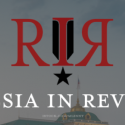Competition between Russia and Turkey Drives Conflict across the Middle East, Africa, and Central Asia
Jul 12, 2021 - Ezgi Yazici
The Russo-Turkish relationship has become a defining driver of conflict in a vast region from North Africa to Central Asia. Turkey and Russia’s shared objective to make the current international system more multipolar leads them to cooperate in many areas, but differences in desired outcomes have led to more frequent confrontations in Syria and the Caucasus. Both states’ ability to compartmentalize their cooperative and competitive activities will likely determine the degree of instability caused by their assertive foreign policies. The United States and its allies must find the right avenues of cooperation with Turkey to counter Russian influence and limit the risk of rapid cross-theater escalation between the Kremlin and Ankara.









